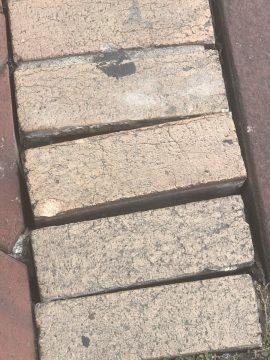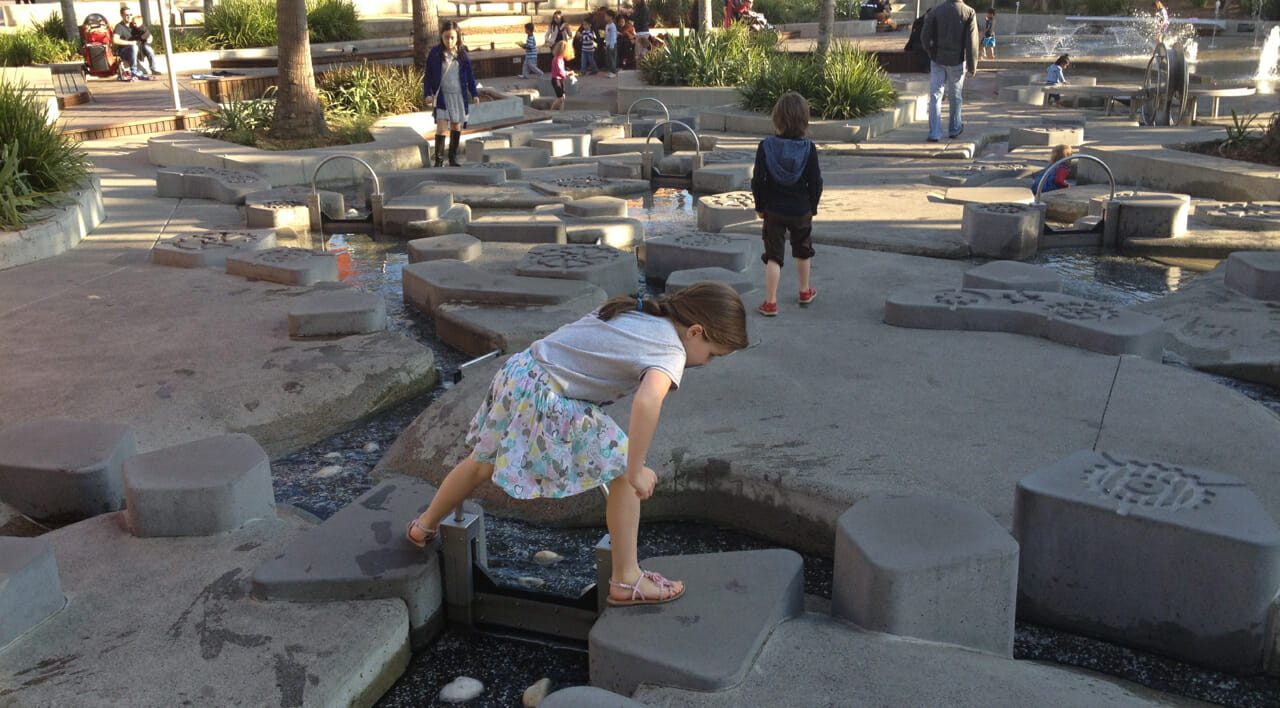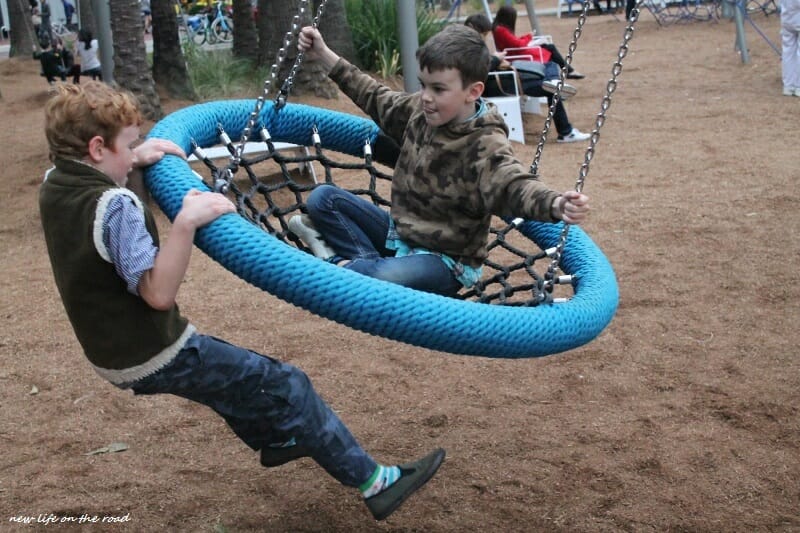Sydney’s Darling Harbor is a vibrant and beautiful area featuring many intentional loose parts. The area’s designers really embraced the Theory Of Loose Parts:
The space is well-planned, engaging, creative, and vibrant.
And yet, many children we observed were attracted to the rough edges, the imperfections, the unintended. Things like this loose brick:

People-watching as we walked along the harbor behind a site-seeing mother and son, I saw the 3 year old child discover the loose part. He was following the long row of tan colored accent brick when one wiggled as he stepped on it. “Mum! I found a wiggle!” he shouted with glee while pausing to test and re-test the wiggle–standing on the brick and shifting his body weight from side to side.
His mother paused with him as he experimented for a moment and then they were off. In that small moment, the child experienced a bit of sensory integration, honed his balance, engaged in some cause and effect thinking, communicated an idea using spoken language, and more. It was far from magical, but it was fun to observe.
I was also overjoyed to find I am not the only one who feels a bit of excitement at discovering a paver with a wobble. While I’ve rarely shouted about it with glee in the last 20 years or so, I do feel a rush of joy when a supposedly solid bit of cityscape moves beneath my feet.
I was also happy to once again see a child embrace a loose part that was not aesthetically pleasing and/or planned by an adult. I love seeing children embrace the wonders of unexpected loose bricks, dead crabs, fresh dog poop, abandoned milk crates, and seagulls. I guess for me it reinforces the ideas that:
- Loose parts don’t have to be planned or pretty.
- Our brains pay attention to novelty.
- Children’s drive to play, explore, and discover doesn’t require much (if any?) adult prompting and planning.
- Early learning curriculum should grow from the here-and-now interests of children.
Simon Nicholson’s theory states:
“In any environment, both the degree of inventiveness and creativity, and the possibility of discovery, are directly proportional to the number and kinds of variables in it.”
His theory doesn’t say the variables have to be planned or pretty. There’s nothing wrong with planned and pretty loose parts, but let’s not forget about the loose parts that are ugly, unexpected, or unplanned.
As you engage the world with young children, consider paying more attention to the unintentional variables you encounter and pausing for a bit of play, exploration, and discovery when such things grab their interest.
Post Author
Jeff Johnson is an early learning trainer, podcaster, and author who founded Explorations Early Learning, Playvolution HQ, and Play Haven.









Leave a Reply